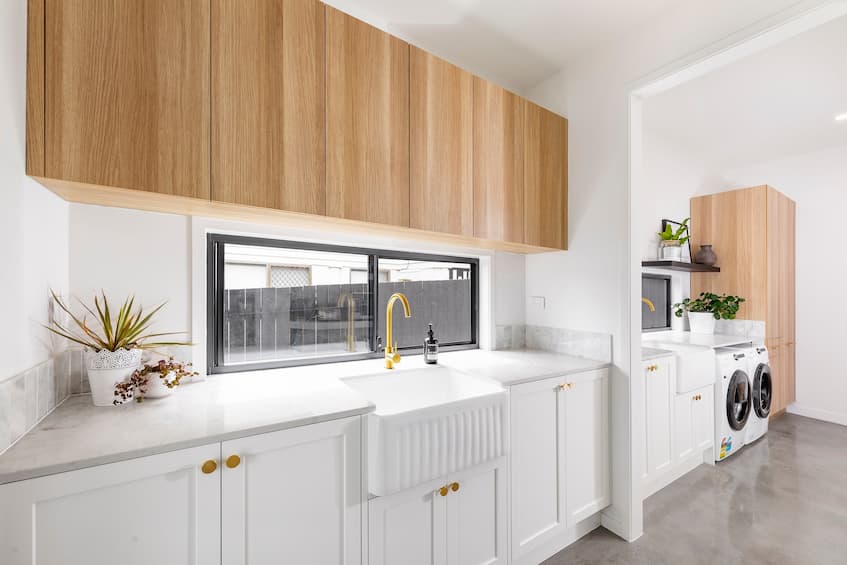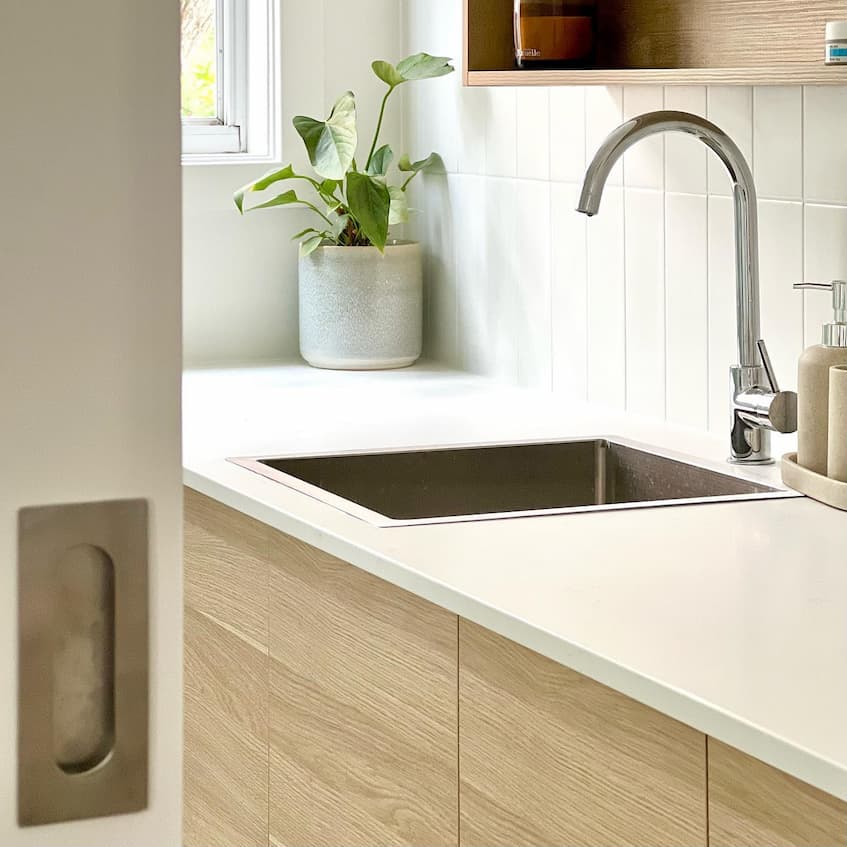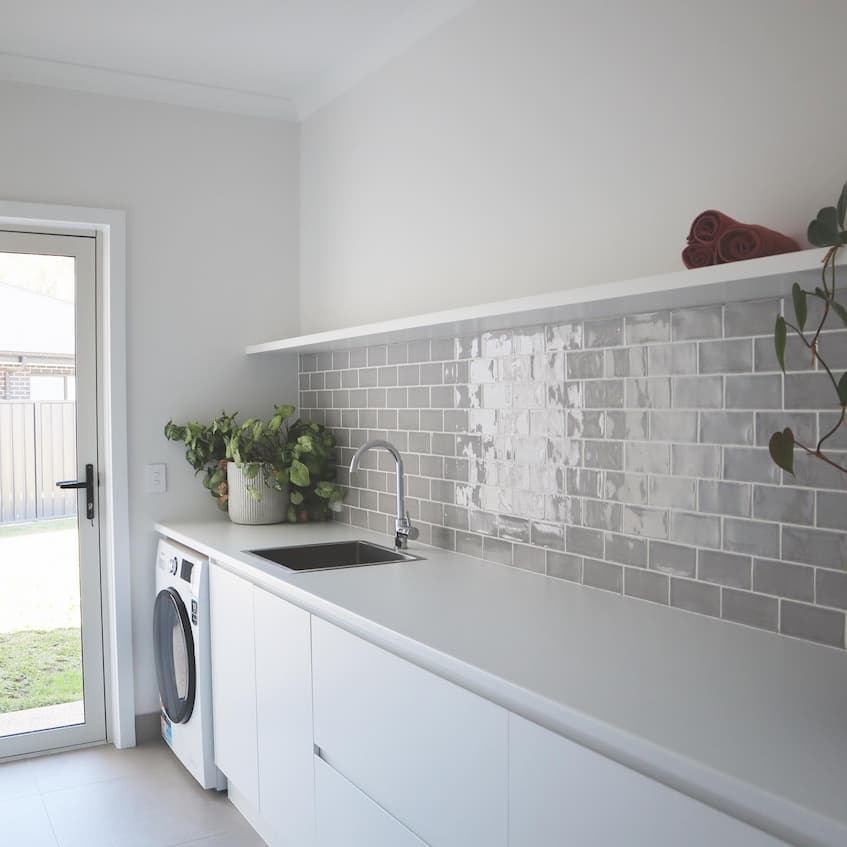
6 Essentials You Need to Set Up Your Laundry Room
Laundry rooms are gradually becoming a basic necessity in a modern home. That said, such an addition will not only make your life easier, but it’ll also increase the value of your home. So it makes sense to design a laundry and utility room (of whatever size) while planning your house or renovating your bathroom.
Here are a few things to think about while designing your laundry room.
Contents
- 1 1. Location: Where Should Your Utility Room Go?
- 2 2. Access to Clean Water: Install Laundry Tapware and Sink
- 3 3. Water-Resistant Flooring and Countertop Materials
- 4 4. Work Surface: Get a Built-in Work Table
- 5 5. Drying: Include a Drip-dry Rack or Hanging Bar
- 6 6. Organisation: Incorporate Plenty of Storage Space
1. Location: Where Should Your Utility Room Go?
Your needs will determine the location. You don’t want a utility room to obstruct your view of the garden, for example, but you could want it to have an entrance to your garden, which implies your utility must be on an external wall.
It makes sense to have your utility as close to the kitchen as possible because connecting utilities is more convenient and less expensive, but there is no hard and fast rule. If laundry space is the primary function of the utility room, another alternative is to locate it close to or within a large bathroom.
2. Access to Clean Water: Install Laundry Tapware and Sink

Incorporate a utility sink with quality laundry tapware into your laundry room design. You can hand-wash delicate garments or soak items with deep, set-in stains in your laundry room sink. For best efficiency, place your utility sink next to or between your washing machine and dryer.
The laundry tapware you choose should blend in elegantly with the rest of your laundry room. So, make sure to consider other fixtures present in the room such as door and cabinet handles and knobs and any lighting fixtures. The tapware should also make your life easier and be suitable for completing your everyday laundry duties no matter what you’re working with.
Then, there’s also the cost to think about. Keeping track of a budget during a remodelling or construction project can be difficult. When it comes to tapware, it’s worth the investment. Purchasing a high-quality faucet will save you time and money in the long term.
Higher quality taps will be more efficient, providing enough pressure and making it easier to complete the duties for which they were created. No matter how much you enjoy using your new laundry faucets, you’ll want to get back to more essential things, like spending time with your family.
3. Water-Resistant Flooring and Countertop Materials
Consider how frequently the floor and counters will be exposed to dampness and moisture while looking for functional laundry room ideas. To avoid mould growth or warping, use water-resistant materials.
Durable, nonporous materials such as quartz, porcelain tile, and granite are among the best laundry room countertop options. Carpets should never be used as laundry room flooring. Instead, choose:
– Luxury vinyl planks or sheet vinyl
– Stone or concrete
– Laminate
– Ceramic tile
You can always add colour and interest to the space with a small decorative rug.
4. Work Surface: Get a Built-in Work Table

Work tables and rolling carts are useful in the laundry room. They can be used to sort and fold clothes, iron wrinkled blouses and dress shirts, or lay damp clothes flat to dry gently. Consider adding a counter on top of your washer and dryer if you don’t have enough space for a small table and have front-loading units.
When a laundry room also doubles as a mudroom, bathroom, or other multifunctional space, you may want to conceal the washer and dryer. Your machines can be housed in the concealed washer and dryer cabinets. For additional storage, add a counter or additional cabinets to the top.
5. Drying: Include a Drip-dry Rack or Hanging Bar
If possible, dedicate an area in your laundry room for a drip-dry rack or a hanging bar so you may hang damp garments if necessary. A solid tension rod and plastic clothing hangers, or a foldable drying rack that conveniently goes into your cabinets when not in use, can be used to create an inexpensive, simple-to-install drying station.
Wall-mounted solutions provide utility while taking up little room. When not in use, a wall-mounted laundry drying rack folds flat against the wall, and hooks can accommodate garment hangers, storage baskets, and an ironing board.
6. Organisation: Incorporate Plenty of Storage Space

An efficient laundry room design must include lots of storage space, such as vertical closets, walk-in pantries, and shelving. Cabinets are especially beneficial if you have small children and need a secure location to keep bleach and laundry detergent capsules. High-quality cabinetry also adds character to your space, resulting in a storage system that is as attractive as it is functional.
Be inventive; even the smallest niches can be used to free up valuable kitchen space. If your under-stairs pantry is being used as a dumping ground, measure it and think about stacking your washing machine and dryer to create a small utility room. Consider putting a workbench in a storage cabinet. Moving appliances could free up kitchen worktop space if there is enough for more plug connections.


No Comments